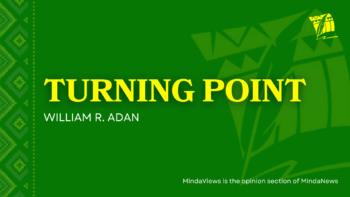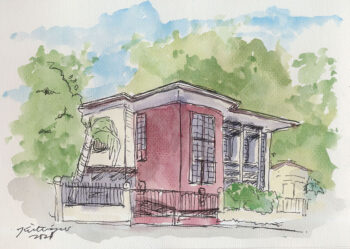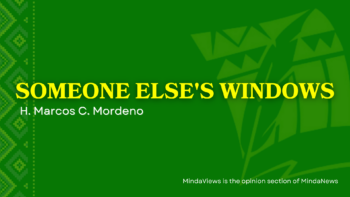I. The Question
GENERAL SANTOS CITY (MindaNews / 27 Feb) – When we started writing this piece in the afternoon of February 25, the followers of Sulu Sultan Jamalul Kiram III were still in their refuge in Tanduo (not “Tanduao” as used in Philippine media), Lahad Datu in the eastern side of Sabah. The Malaysian Security Force had not enforced its new Sunday deadline for the Sultan’s followers under his brother Raja Muda Agbimuddin to leave without a shot. A second deadline had been set for midnight of February 26.
As of this morning, media reports from Manila and Sabah indicated no change in the standoff. Agbimuddin had repeated his brother’s “do-or-die” stand. The Sultan, through his spokesman, told the Philippine Daily Inquirer that his men would stay put in Tanduo until ordered otherwise by him despite President Aquino III’s stern warning of possible arrest. From Sabah, Wikisabah reported security forces were ready to move in.
Evidently, Kuala Lumpur, ignoring the calls of the political oppositions in Sabah for the military and police to use force, is making good its option to avoid bloodshed through diplomacy. As Manila has sent a ship to bring home the Sultan’s followers, the two countries obviously want to simplify the solution: Go home in peace; we’ll talk later. Avoiding the spilling of blood is in the conscience and hands of Sultan Jamalul Kiram III and his brothers.
Clarifying the Question
Unless consumed by pride or markabat (also: maratabat), leaving Tanduo in peace is simple. But talking later will involve the simple question, “Who owns Sabah?”, that events and circumstances of three centuries and a half have complicated. Will leaving Tanduo peacefully and talking later happen?
Let’s clarify the question. “Sabah” is the eastern part, less than half, of the present Sabah state as delineated in legal documents; “Who” refers to the Sultanate of Sulu or the Sultan and his heirs, Malaysia, the Philippines and the Sabahans; and “owns” denotes possession of a territory with sovereignty – not just possession or ownership of any piece of property with mere proprietary rights alone.
In the first case, “possession of a territory with sovereignty”, proprietary (territorial) and sovereignty rights are inseparable; the possessor must be a sovereign state or a political entity vested with sovereignty. In the second case, the possessor, limited to a private individual or group, is entitled to proprietary but not sovereignty right.
History of the Question
Let’s trace the history of the question. When the Sultan of Brunei awarded North Borneo to the Sultan of Sulu in 1658, the act was the transfer of a territory from one sovereign state to another, by one sovereign to another. The Sultanate of Sulu owned Sabah. Since during that era of monarchy, the sovereign state is identified with the sovereign, the Sultan of Sulu owned Sabah.
In 1761 when the Sultan of Sulu, by an agreement, allowed the British East India Company to set up trading posts in North Borneo and in 1878 leased North Borneo to the British North Borneo Company, the Sultanate of Sulu still owned North Borneo. The agreements, according to legal experts, were not treaties as private companies could not enter into treaties; the Sultan of Sulu did not give away any part of his dominion or his sovereignty.
In 1881, the British North Borneo Company was chartered by the King. It was tasked to administer North Borneo which in 1888 became a protectorate of the Great Britain. To clarify, as gleaned from various sources, the protectorate did not just consist of that part of North Borneo under lease by the Company from the Sultanate of Sulu but included the other part ceded by the Sultan of Brunei to Britain in 1846.
When the Company was dissolved in 1946, North Borneo became a British Colony and the Great Britain assumed the lease in spite of a stipulation prohibiting of its transfer to a third party without the consent of the Sultan of Sulu. In 1963, when the Federation of Malaysia was formed, Great Britain turned over North Borneo, together with Sarawak, to the Federation. Malaysia assumed the lease.
As a federal state, North Borneo is now Sabah. As stated earlier, as delineated in legal documents, the claim of the Sultan of Sulu covers less than half of Sabah, only the eastern part.
Two Analyses
Sen. Jovito Salonga, while a congressman in 1962, analyzed the Sabah question in an article, “The Philippine Claim to North Borneo: A Statement of Facts”, published in the Manila Times, Manila Chronicle and Philippine Free Press in May, 1962. In that year, President Diosdado Macapagal initiated the Philippine claim to North Borneo and in the following year, he picked Salonga to lead a delegation to London to pursue the claim. North Borneo was then a colony of Great Britain.
By his analysis of the facts, he concluded that “the Philippine Government should now, in the light of all relevant evidence, institute the claim and initiate the necessary steps toward the peaceful settlement of the North Borneo question”. Great Britain did not own North Borneo. [The article was republished in Manila newspapers on September 1, 2011 obviously in support of a move urging President Aquino III to revive the claim.]
Vidal Yudin Weil, a Sabahan noted writer and blogger, when asked for his views on the standoff, wrote “To whom does Sabah belong?” that was published in Free Malaysia Today (February 22, 2013) and in Wikisabah (February 23, 2013). He analyzed documents starting with the1878 lease agreement, events and circumstances related to the Sabah question.
Concluding with a critical comment on the relinquishment to Malaysia by Great Britain of her sovereignty over North Borneo as provided in Article IV of the “Malaysia Agreement of 1963”, he wrote:
“Because it was stated that one part of Sabah** belonged to the Brunei Sultanate and the other part to the Sulu Sultanate, and while Brunei had ceded her part of Sabah’s sovereignty, Sulu (now part of the Philippines) only leased her part of Sabah, does Her Britannic Majesty had (sic) sovereignty over the whole or only one part of Sabah?
“It is obvious that the answer is only one part of Sabah, therefore Article IV is null and void thereby rendering the entire Malaysia Agreement of 1963 illegal and of no effect…!
“There is a legal maxim ‘nemodat quod non habet’ which means ‘you cannot give what you do not have’.”
Great Britain did not own that part of Sabah leased to British North Borneo; she has no sovereignty over it. She cannot relinquish sovereignty that she did not have. Malaysia does not own that part of Sabah claimed by the heirs of the Sultan of Sulu.
By Salonga’s and Weil’s analyses, does it mean that the heirs of the Sultan of Sulu, and by extension the Philippines, own the Sabah in question?
(To Be Concluded: Complicated)
(“Comment” is Mr. Patricio P. Diaz’ column for MindaViews, the opinion section of MindaNews. The Titus Brandsma Media Awards recently honored Mr. Diaz with a “Lifetime Achievement Award” for his “commitment to education and public information to Mindanawons as Journalist, Educator and Peace Advocate.” You can reach him at patpdiazgsc@yahoo.com.)







